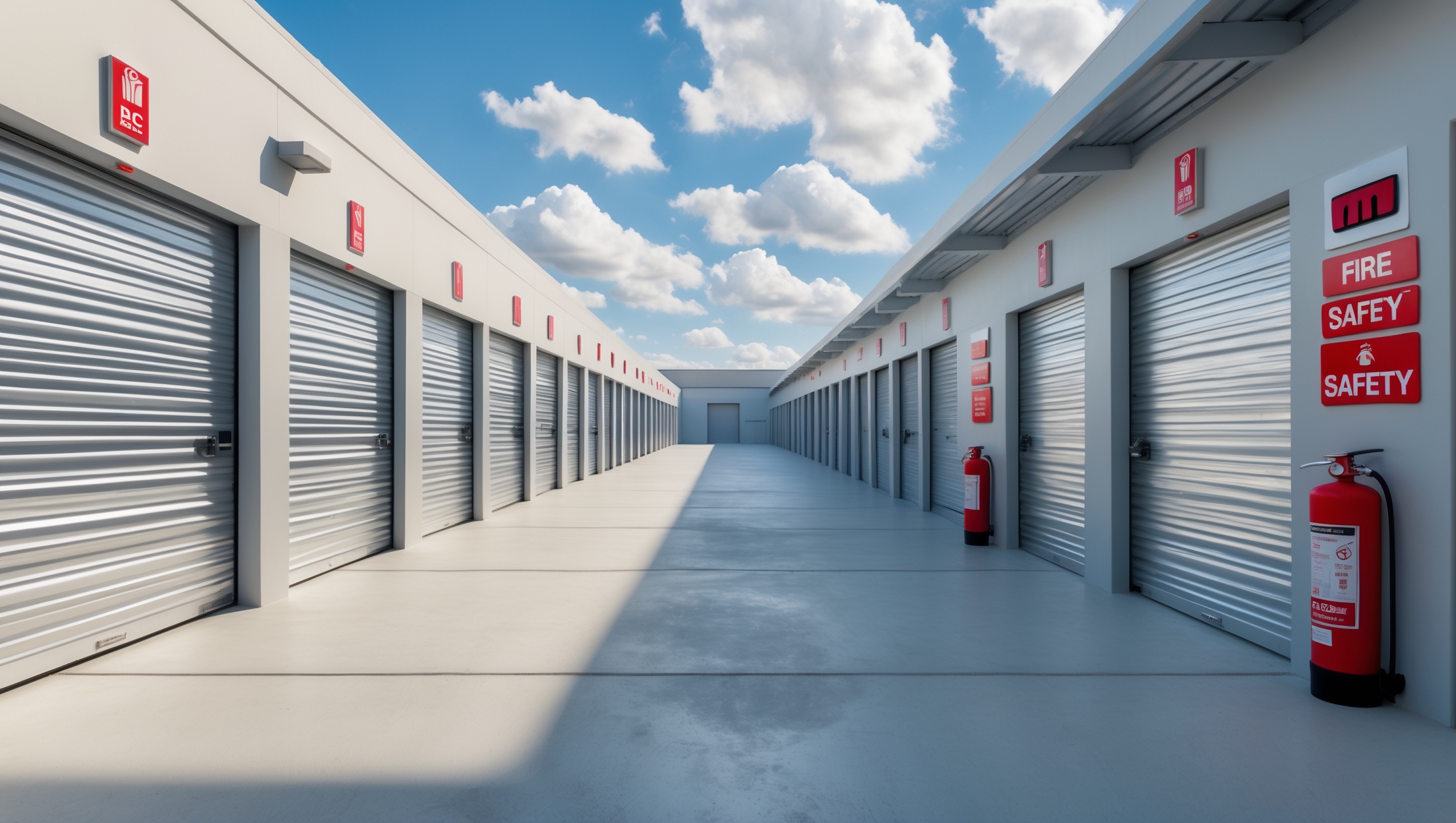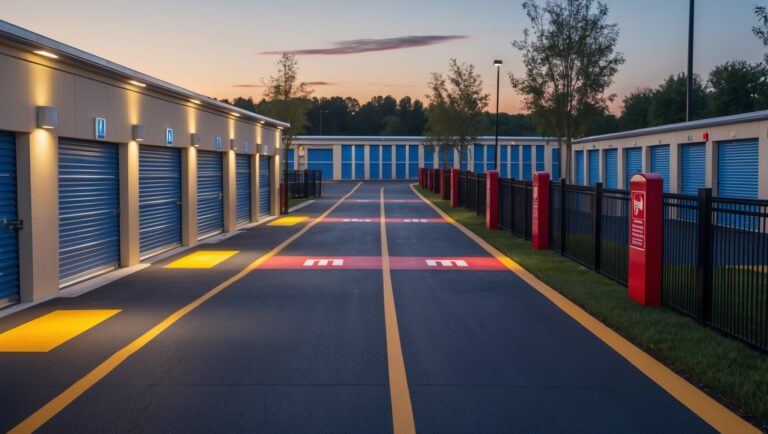Storage Unit Fire Prevention: Essential Strategies for Facility Owners
Introduction: Why Fire Prevention Is Critical for Storage Facilities
For storage facility owners, fire prevention is not simply a matter of compliance—it’s a vital aspect of protecting both your investment and your tenants’ belongings. The unique environment of self-storage units, often filled with a variety of personal items, business inventory, and even sensitive documents, presents distinct fire risks. Unlike residential or office spaces, storage facilities are often unsupervised for long periods and may lack on-site monitoring, making early fire detection and prevention all the more essential.
In recent years, the storage industry has seen several high-profile fires leading to millions in property loss and, more importantly, loss of customer trust. Many of these disasters were preventable, stemming from overlooked maintenance, inadequate safety systems, or lax enforcement of facility rules. Fortunately, with the right strategies, most fire hazards can be effectively managed or eliminated.
This guide offers practical, actionable strategies for fire prevention in storage facilities. Whether you manage a single location or oversee a network of properties, these best practices will help you minimize fire risks, comply with legal requirements, and foster a reputation for safety and reliability in the competitive moving and storage industry.
Understanding Fire Risks in Storage Facilities
Common Causes of Storage Unit Fires
- Improper Storage of Flammable Materials: Tenants may inadvertently store paints, solvents, gasoline, or other hazardous chemicals, heightening fire risks.
- Electrical Malfunctions: Outdated wiring, overloaded circuits, or unauthorized electrical use inside units are frequent culprits.
- Arson and Vandalism: Isolated locations or poor lighting can make facilities targets for intentional fire-setting.
- Poor Housekeeping: Excessive debris, dust, or trash increases combustible loads and fire spread potential.
- Climate Control System Failures: Malfunctioning HVAC units can spark electrical fires, especially if not regularly maintained.
Unique Challenges of Storage Environments
- Limited Supervision: Units are often unattended, delaying fire detection.
- Unknown Contents: Facility managers cannot always monitor what tenants store.
- Compartments: The design of individual units can impede fire suppression and emergency response.
Developing a Comprehensive Fire Prevention Plan
1. Facility Design and Construction Materials
Begin with fire-resistant design wherever possible. Modern storage facilities use non-combustible materials such as steel, masonry, and concrete. Retrofitting older buildings with fire-rated walls and ceilings can help contain possible fires and slow their spread.
- Use fire-rated doors and partitions between units.
- Seal penetrations in walls and ceilings to prevent fire from moving rapidly between units.
- Install fireproof insulation in attics and wall cavities.
2. Implementing Fire Detection and Suppression Systems
Early detection and rapid suppression are critical to minimizing fire damage.
- Smoke Detectors: Install interconnected smoke alarms throughout hallways and common areas. For climate-controlled buildings, consider unit-specific detectors.
- Sprinkler Systems: Wet-pipe systems (where pipes are always filled with water) are most reliable for storage facilities. Ensure regular maintenance to prevent freezing or leaks.
- Fire Extinguishers: Place portable extinguishers at easily accessible intervals according to code (usually every 75 feet in corridors).
- Alarm Systems: Integrate fire alarms with central monitoring for rapid response.
3. Establishing and Enforcing Tenant Policies
Clear, enforceable rules are essential for minimizing risky tenant behavior.
- Explicitly prohibit the storage of flammable, combustible, or hazardous materials in rental agreements.
- Post visible signage listing banned items (e.g., gasoline, propane tanks, fireworks, paint thinners).
- Conduct periodic visual inspections and, where legal, request tenants to confirm contents.
- Offer guidance on safe storage practices in welcome materials and newsletters.
4. Routine Maintenance and Housekeeping
Proactive maintenance greatly reduces fire hazards:
- Keep hallways, common areas, and exteriors clear of trash, pallets, and debris.
- Regularly inspect and maintain electrical panels, outlets, and lighting fixtures.
- Vacuum and clean dust from around electrical equipment and HVAC units.
- Check for and repair any roof leaks to prevent water from compromising electrical systems.
- Ensure landscaping is tidy and free of dry brush near buildings.
Fire Safety Compliance: Meeting Legal Requirements
Understanding Codes and Standards
Storage facilities are subject to national, state, and local fire safety codes. The most widely adopted is the National Fire Protection Association (NFPA) 1: Fire Code and NFPA 101: Life Safety Code. Local authorities may have additional requirements for the number and placement of extinguishers, alarm systems, and exit routes.
Steps to Ensure Compliance
- Schedule annual inspections with your local fire marshal or fire department.
- Maintain records of system tests, maintenance, and upgrades.
- Keep up-to-date on changes to relevant codes and standards.
- Ensure all fire doors and exits are unobstructed and clearly marked.
- Train staff on emergency procedures and the use of fire extinguishers.
Staff Training and Emergency Preparedness
Staff Training Essentials
Well-trained staff are your first line of defense against disaster. Training should cover:
- Identifying and reporting fire hazards.
- Using fire extinguishers and alarm systems.
- Evacuation procedures and tenant notification protocols.
- Periodic fire drills to reinforce readiness.
Creating and Practicing an Emergency Response Plan
Develop a detailed emergency response plan, including:
- Up-to-date contact information for local fire departments and emergency services.
- Assignment of roles (e.g., who calls 911, who guides tenants, who secures records).
- Maps of facility exits, fire extinguishers, and alarm pull stations for staff and tenants.
- Regular review and practice of the plan, including after any staff turnover.
Leveraging Technology for Enhanced Fire Safety
Smart Detection and Monitoring Solutions
Modern technology offers advanced options for fire detection and facility monitoring:
- Networked smoke and heat detectors with central station monitoring.
- Remote video surveillance, integrated with alarm systems, to detect unauthorized access or suspicious activity.
- Mobile notifications to managers and emergency contacts for immediate response.
Environmental Controls and Sensors
Environmental monitoring systems can alert you to risks before they escalate:
- Temperature and humidity sensors to detect HVAC malfunctions or potential overheating.
- Leak detection around electrical rooms and climate control systems.
- Data logging to identify trends or recurring issues that could signal future fire risks.
Case Studies: Lessons from Storage Facility Fires
Case 1: The Cost of Neglected Maintenance
In 2020, a regional storage operator experienced a major fire traced to faulty wiring in an older building. The fire spread rapidly due to the absence of sprinklers and the presence of flammable contents. The incident highlighted the need for regular electrical inspections and retrofitting older facilities with modern suppression systems.
Case 2: Effective Prevention in Practice
Another facility, built with fire-resistant materials and equipped with monitored alarms and sprinklers, contained a fire started by a tenant’s illegal storage of solvents. Thanks to early detection and automatic suppression, only a single unit was affected, and losses were minimal. The operator’s strict enforcement of storage rules and routine inspections were credited with preventing a larger disaster.
Insurance Considerations for Fire Protection
Securing Appropriate Coverage
Despite the best prevention efforts, fires can still occur. Comprehensive property and liability insurance is essential for facility owners. Review your policy to ensure:
- Coverage includes fire damage, smoke damage, and water damage from sprinklers.
- Policy limits are adequate for full rebuilds and tenant claims.
- Tenants are encouraged to carry their own renter’s insurance.
Documenting Your Prevention Efforts
Insurance providers often offer discounts or incentives for proactive fire safety measures. Maintain detailed records of:
- System installations and upgrades.
- Staff training and emergency drills.
- Maintenance logs and inspection reports.
Best Practices Checklist
- Use non-combustible construction materials whenever possible.
- Install and test smoke detectors and sprinkler systems annually.
- Keep all fire exits accessible and clearly marked.
- Educate tenants on prohibited items and safe storage.
- Conduct regular facility inspections and enforce housekeeping standards.
- Train all staff in fire prevention and emergency response.
- Integrate technology for monitoring and rapid alerts.
- Update insurance policies and encourage tenant coverage.
Conclusion: Making Fire Prevention a Core Business Value
Fire prevention may not be the most visible part of operating a storage facility, but it is arguably among the most important. The consequences of a fire extend well beyond property loss—they can disrupt your business, erode tenant trust, and lead to costly legal battles. By making fire safety a core part of your operations, you demonstrate a commitment to your customers’ well-being and the long-term sustainability of your investment.
Implementing the strategies outlined in this guide will help you create a safer storage environment, comply with evolving codes, and reduce your risk profile for insurance purposes. Remember, fire prevention requires vigilance, ongoing staff training, and a willingness to invest in both modern technology and robust policies. The peace of mind you provide to your tenants will pay dividends in customer loyalty and positive word-of-mouth, setting your facility apart in a competitive market.
Start today by reviewing your current fire prevention measures, scheduling a thorough inspection, and updating your emergency plans and tenant communications. The effort you invest now could make all the difference in protecting your business—and the possessions entrusted to your care—for years to come.






